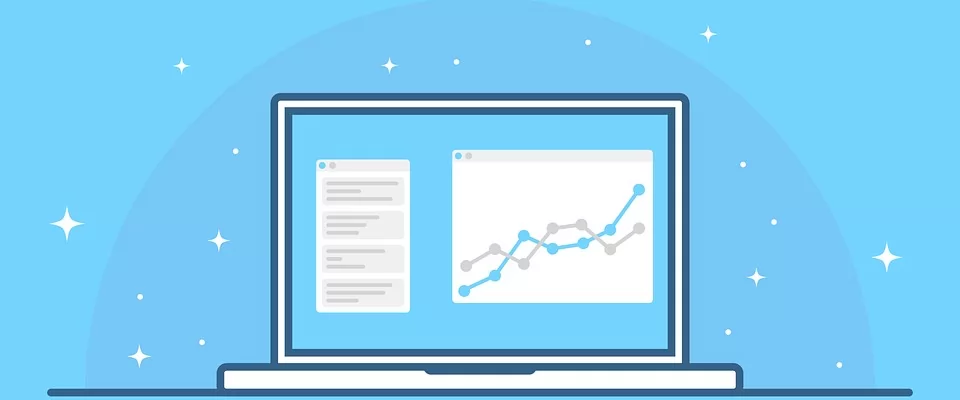Identify and remove toxic backlinks
At Ma-no we are aware of the importance of a good linkbuilding strategy in order to achieve success with a website. Links are key to placing a website among the top positions in Google search results, and therefore increasing the number of visits and conversions.
But in today's post we are not going to talk about how to design a careful and constant backlink strategy, but rather we are going to focus on poor quality toxic backlinks, a technique that is becoming increasingly popular in SEO positioning, specifically Black Hat SEO or Negative SEO, which we should not overlook.
We are going to tell you what backlinks are, what you should do to identify the bad ones and how you can eliminate them, so if up to now you didn't know what backlinks were or, simply, you hadn't paid the attention they deserve, we recommend you to pay attention and take note; what we are going to tell you next is of interest to you.
WHAT ARE BACKLINKS?
When we talk about backlinks, we are referring to inbound links that come to our website from other pages. A priori, having backlinks that point to our website is beneficial, since the more pages that link to us, the more relevance and authority we obtain, and the easier it is for us to climb positions in Google.
But as we have said, this is a priori, as it is true that as long as these incoming links reach us from pages considered relevant in the eyes of Google, the result will be positive.
Links have a great weight in search engine positioning and are an important part of any SEO strategy. Since Google introduced its updated Penguin algorithm in 2012, artificial links, those purchased or coming from spam pages, can lead to a Google penalty, which would lead to the page losing positions.
The situation changes when the links come from poor quality pages, considered as SPAM or that have suffered some kind of penalty. In that case we would be receiving harmful backlinks, which is a real risk, because if our number of bad quality toxic backlinks is very high, we could end up being penalised, seeing our website lose positions in Google at a dizzying rate.
And the bad consequences of receiving toxic inbound links are due to the Google Penguin algorithm, which is in charge of analysing the suspicious links a website receives, penalising the website itself for "bad practices" and causing a sharp drop in its organic traffic.
This, with the aim of damaging the positioning of competitors, has become one of the main techniques of Negative SEO nowadays, which means that you have to be more attentive than ever to your link profile, in order to eliminate the harmful links that may be linking you.
We are going to give you some tips that will be of great help when it comes to identifying and eliminating bad quality harmful links that are coming from other websites considered as toxic.
HOW TO DETECT TOXIC BACKLINKS?
Although there are different ways to identify harmful backlinks, we have chosen the Ahrefs tool, as we consider it to be the most complete and efficient. The only problem with Ahrefs is that of payment, but in case you are not willing to pay for it, you have other options such as "Open Link Profiler", a tool which although perhaps not so complete, will allow you to detect the toxic links that are linking to your web.
Both tools allow us to analyse the number of incoming links to our website. Normally, one of the most effective ways to identify them is to observe the number of inbound links that are pointing to our website.
If the graphs show that in a short period of time, we have received a very high number of links, higher than usual, it is very likely that we have suffered a negative SEO attack, and Google will identify that these links have been generated artificially.
It can also happen that after a long period of time without reviewing our link profile, you find that you have received poor quality links. Although these links may not be due to a negative SEO attack, it would be advisable to remove them, as otherwise they could put the positioning of our website at risk.
HOW TO ELIMINATE POOR QUALITY TOXIC BACKLINKS?
Once we have detected the toxic backlinks that our website is receiving, it is time to eliminate them. To do this we have to access our Webmaster Tools, and through the Disavow Links Tool, which is the best known and most effective tool for disabling links, we will send a report to Google with all the links we do not want it to take into account, indicating that they are of low quality and we want to get rid of them.
Once the application has been submitted and approved, it is important (as it always is in SEO) to regularly monitor the link profile, to detect and remove any artificial or toxic links as soon as they appear.
If you regularly perform this maintenance (at least once a month), you will ensure that when Google bots crawl your website, they will not be able to detect any toxic URLs, and therefore you will not be penalized by the Google Penguin algorithm, at least for having toxic links.
CONCLUSION
In short, having a good linkbuilding strategy is key to improving the positioning of your website, but in addition to making an effort to receive quality inbound links from relevant sites, you should also pay special attention to your link profile, to check whether or not you have received toxic backlinks, and remove them if necessary.

